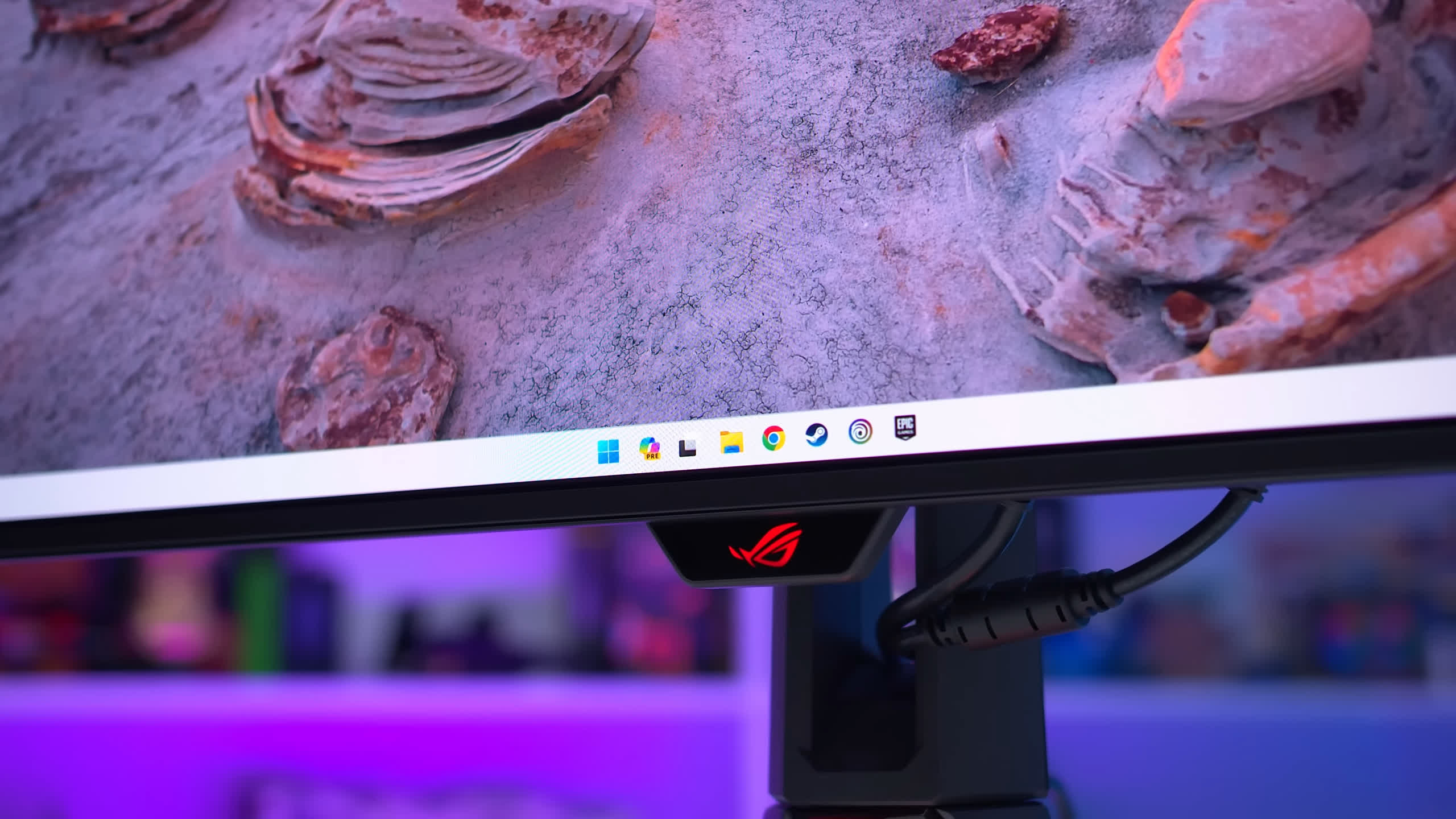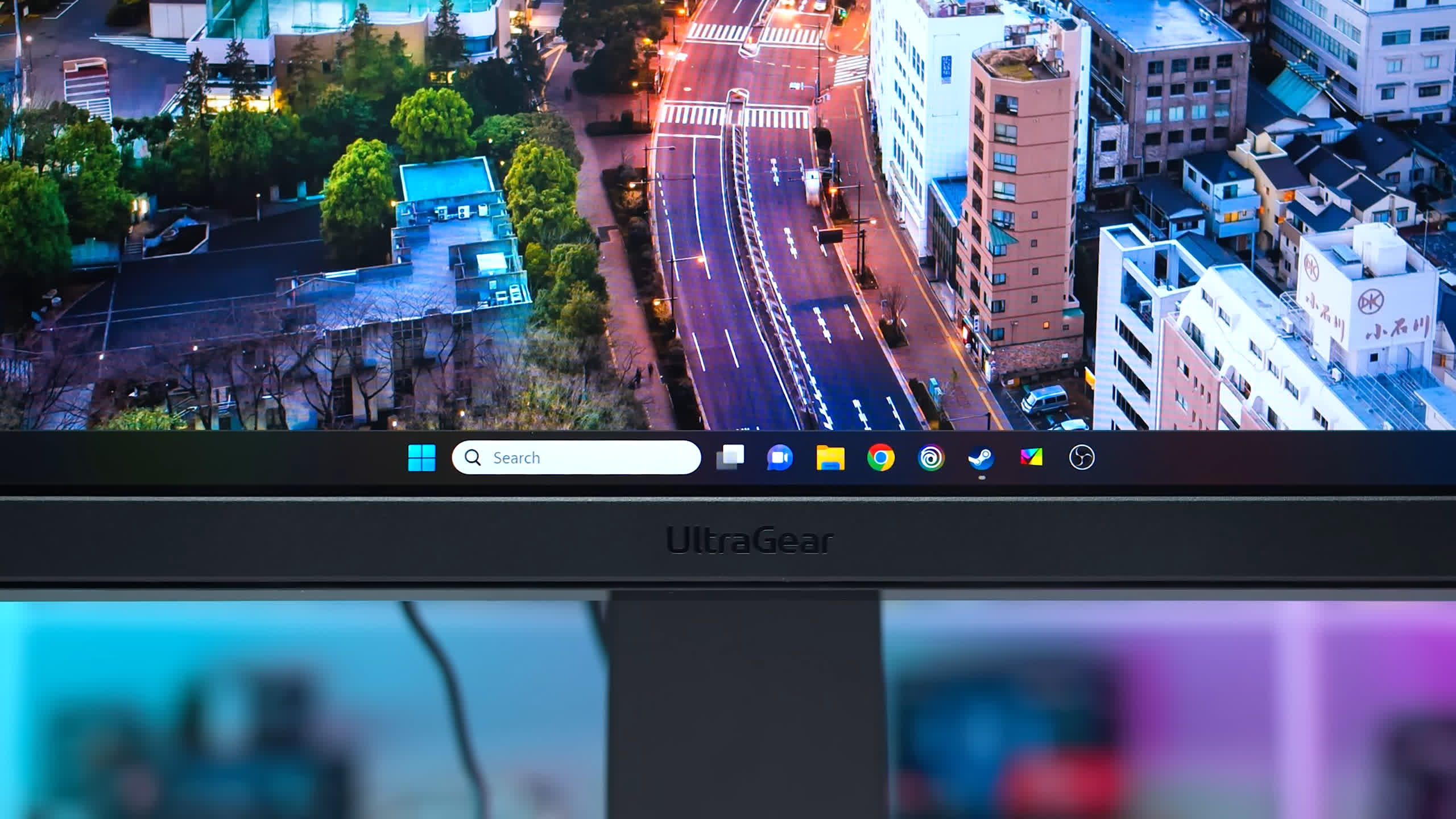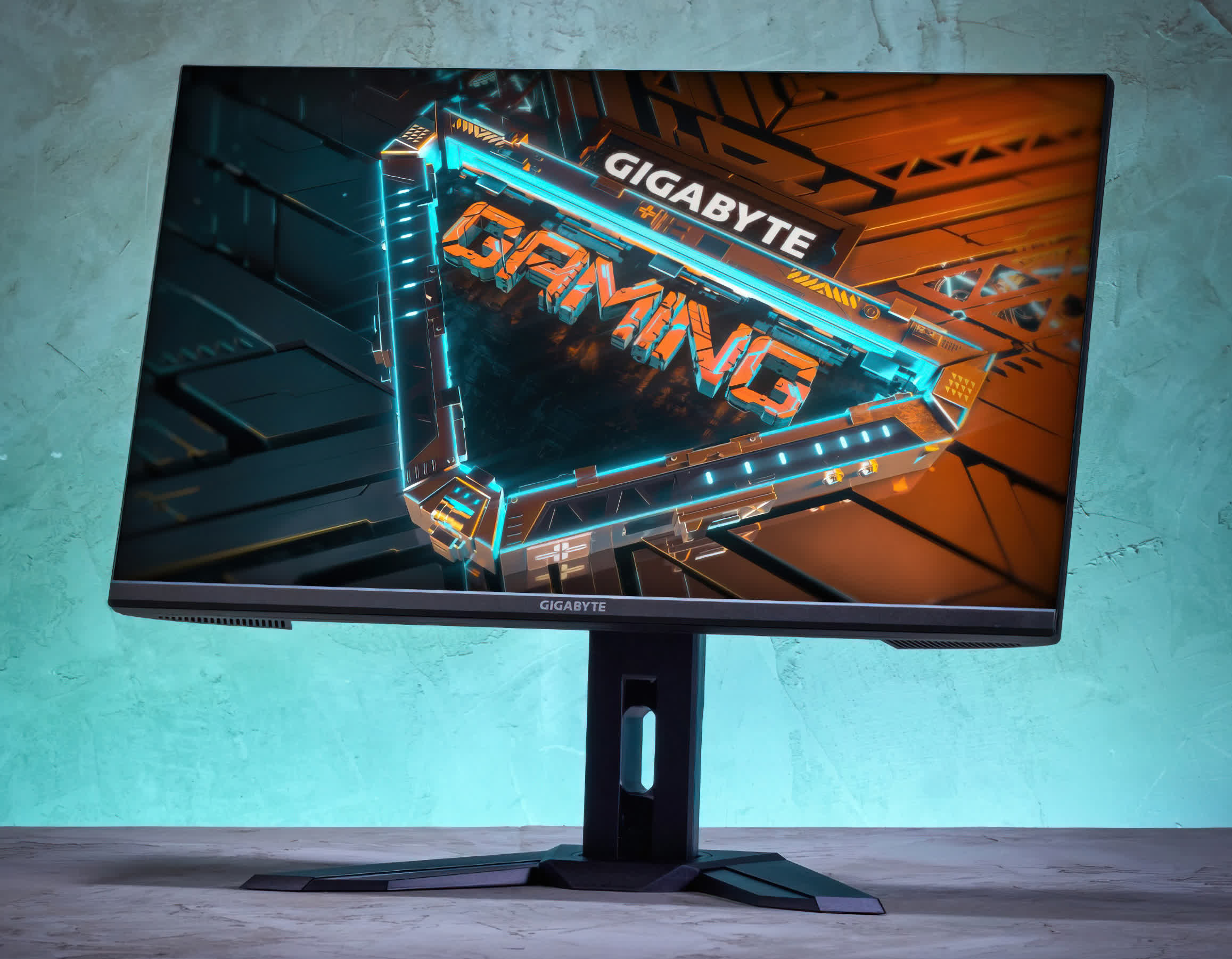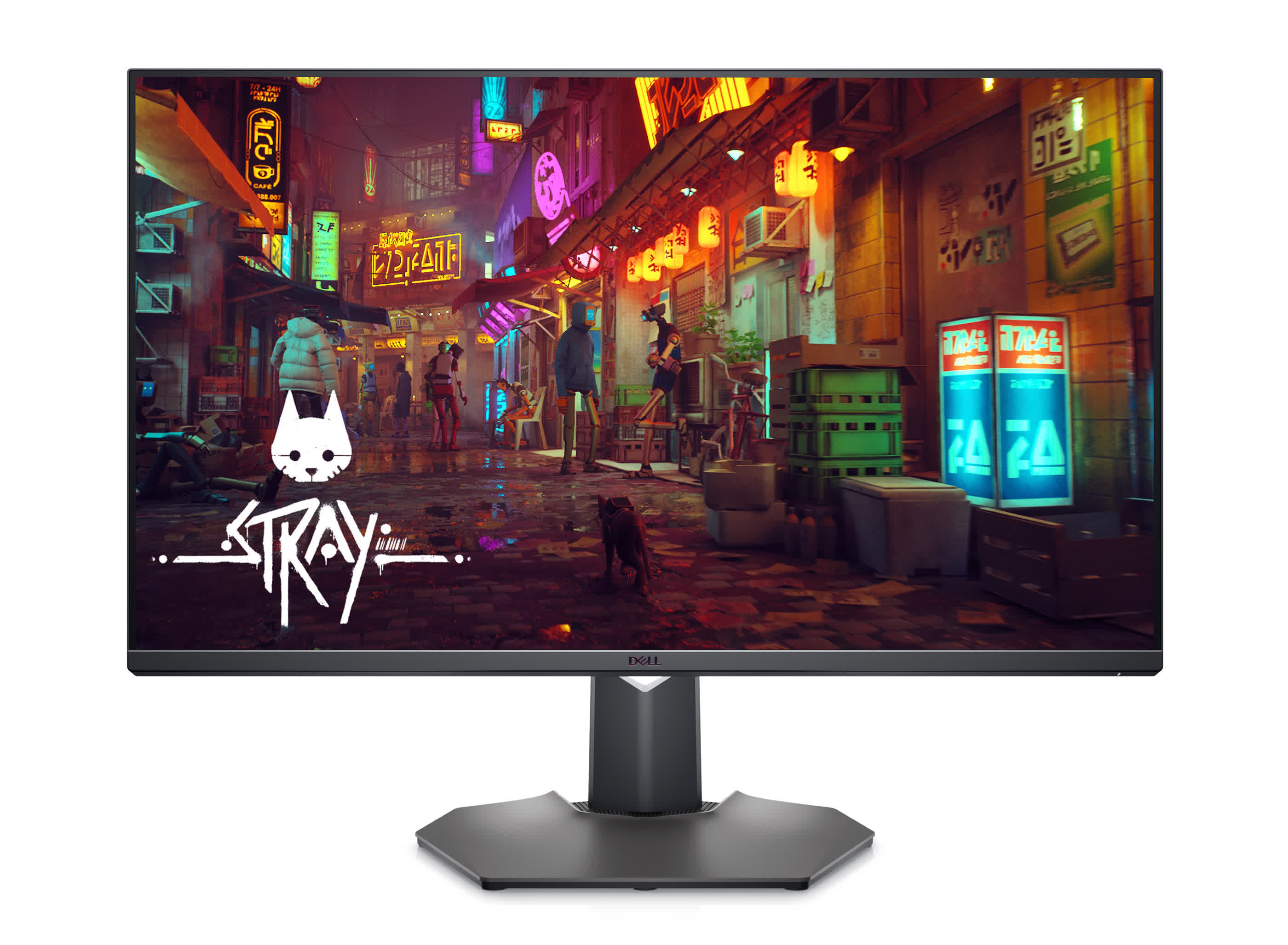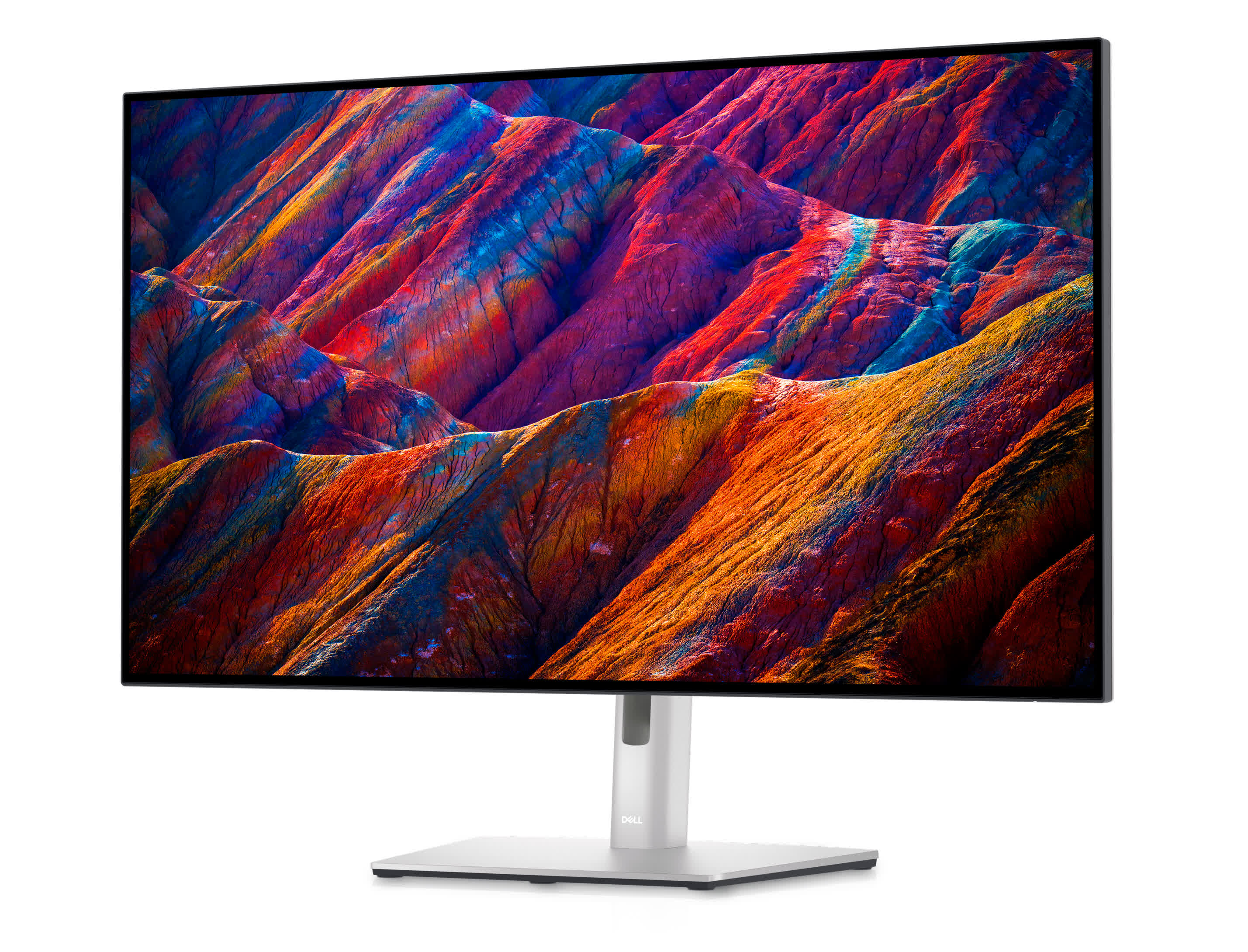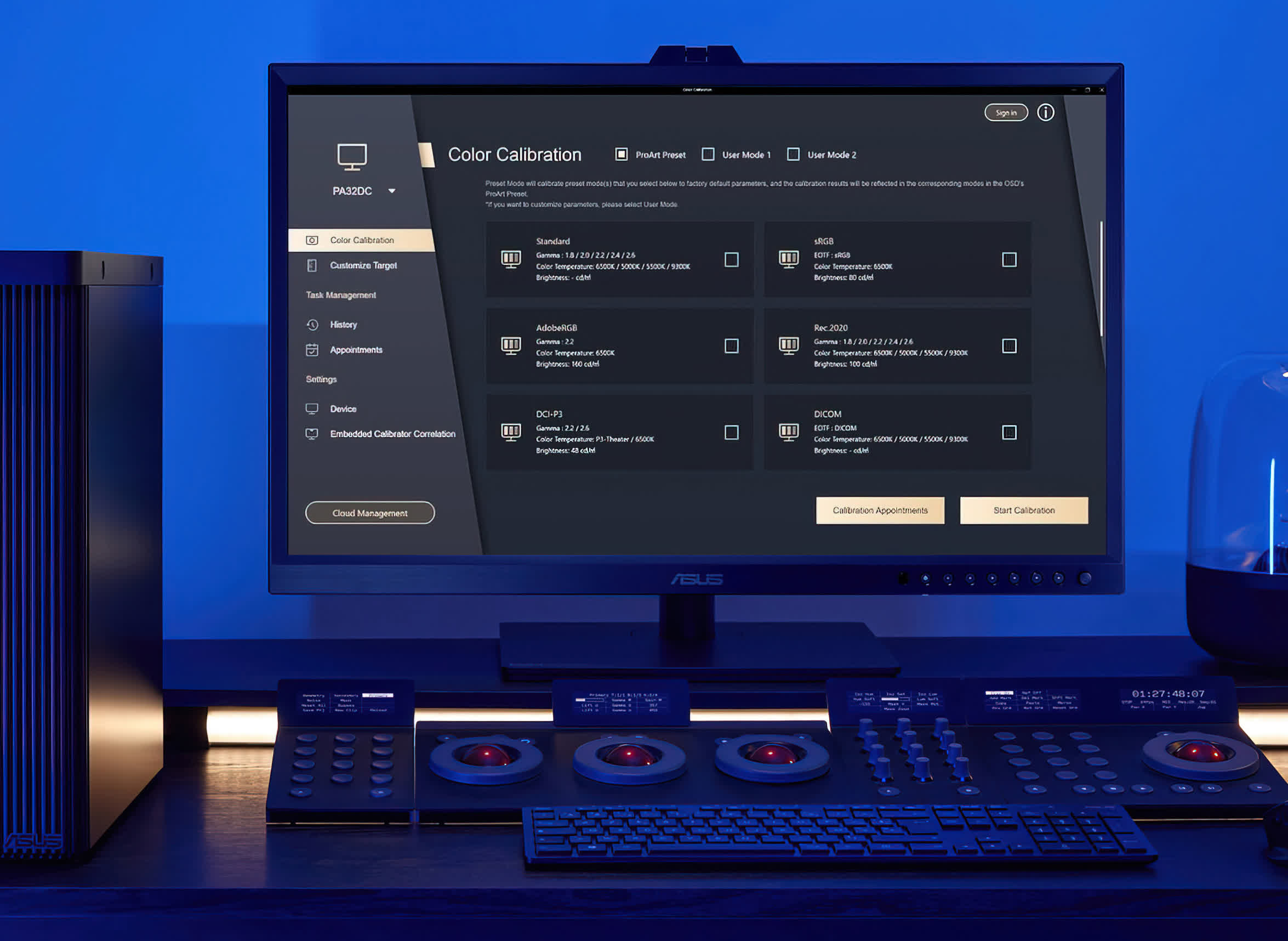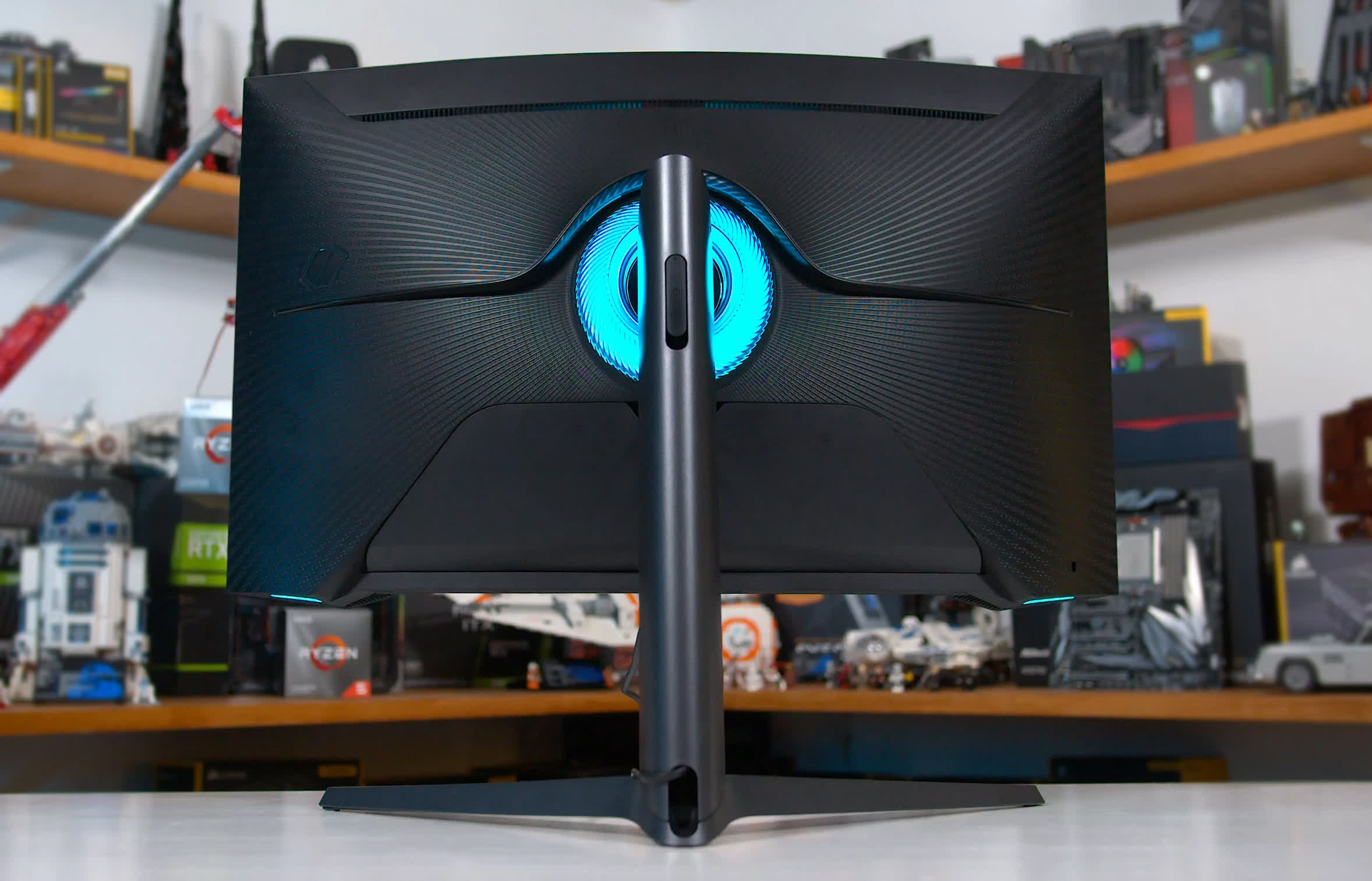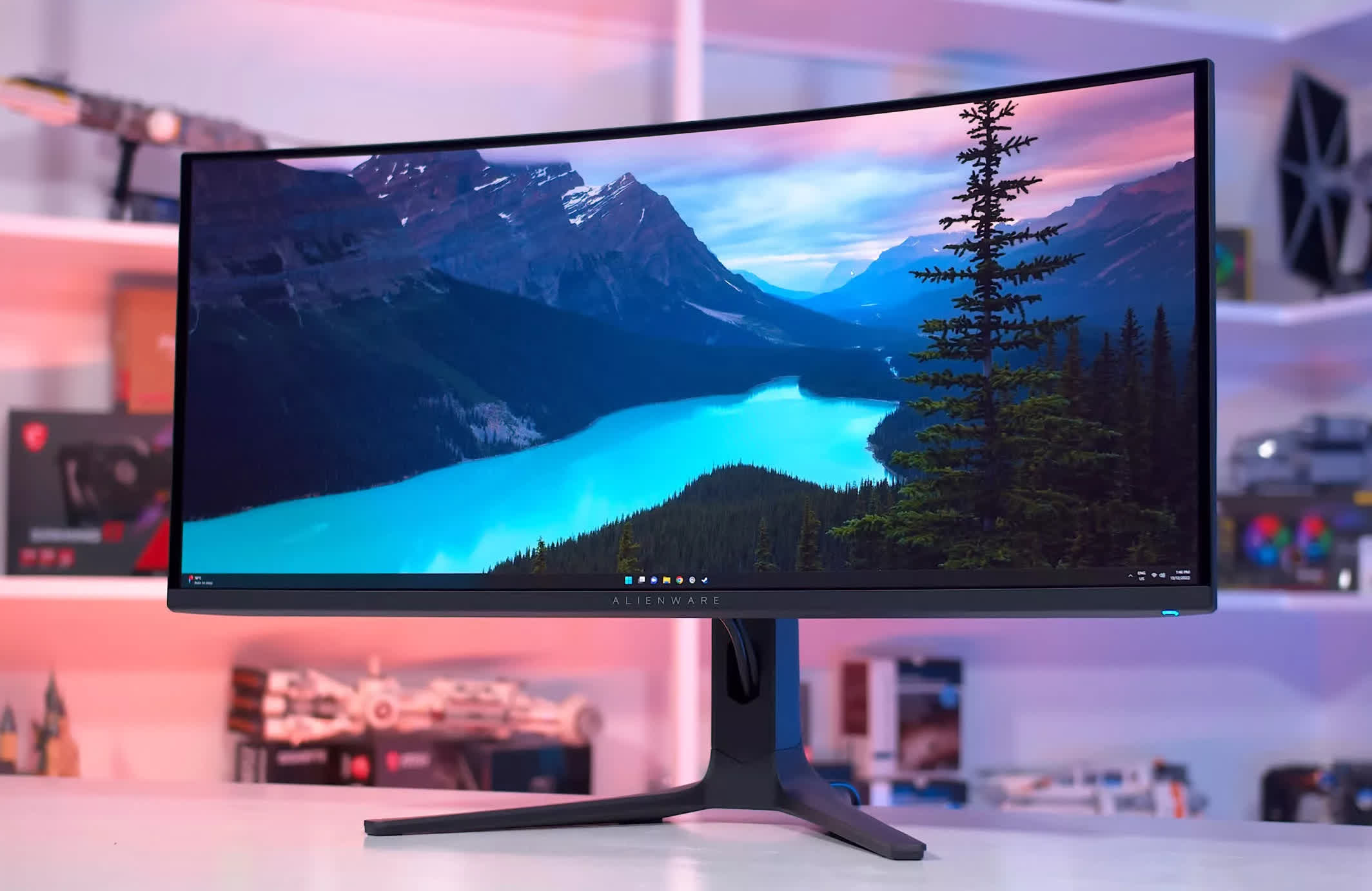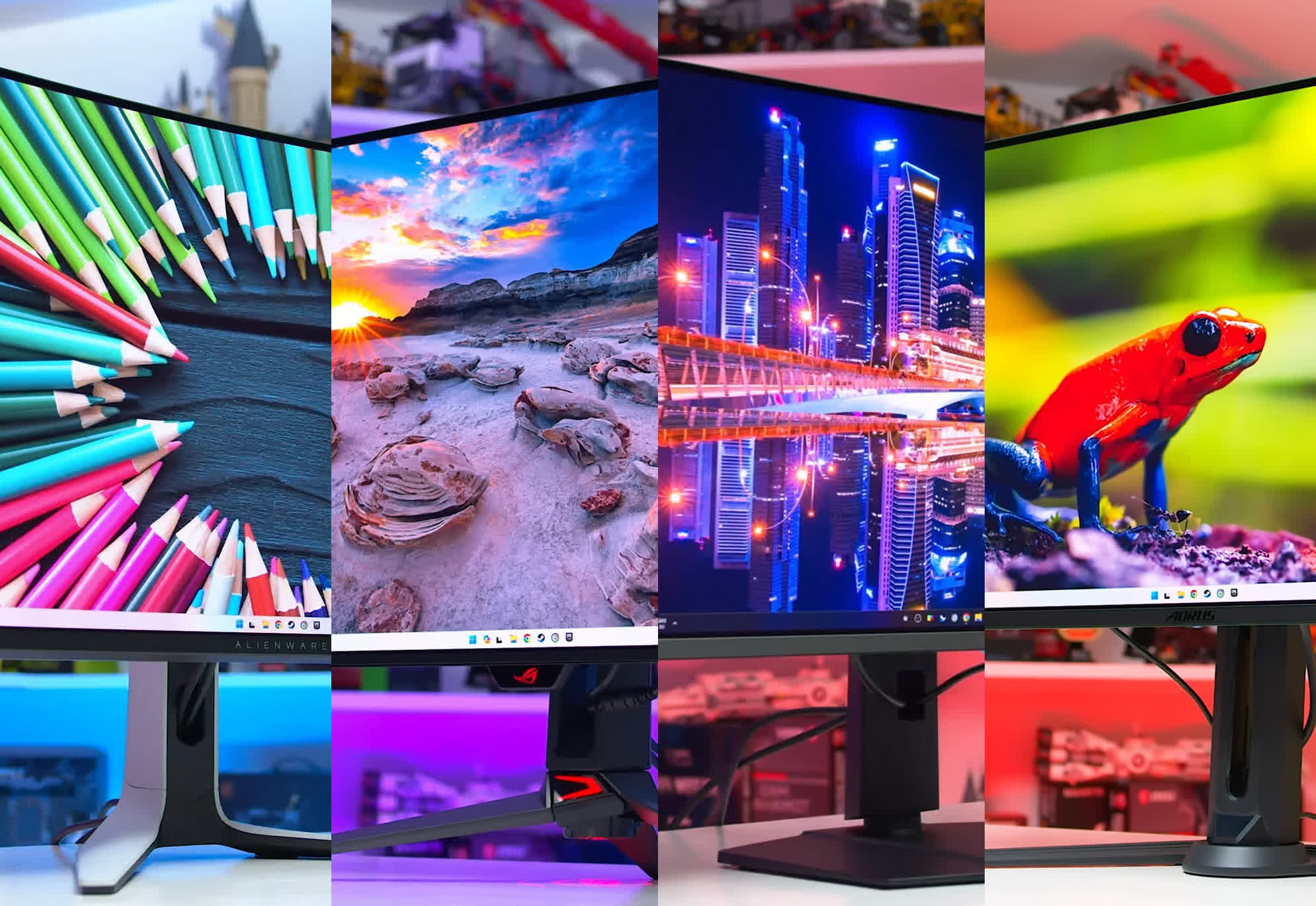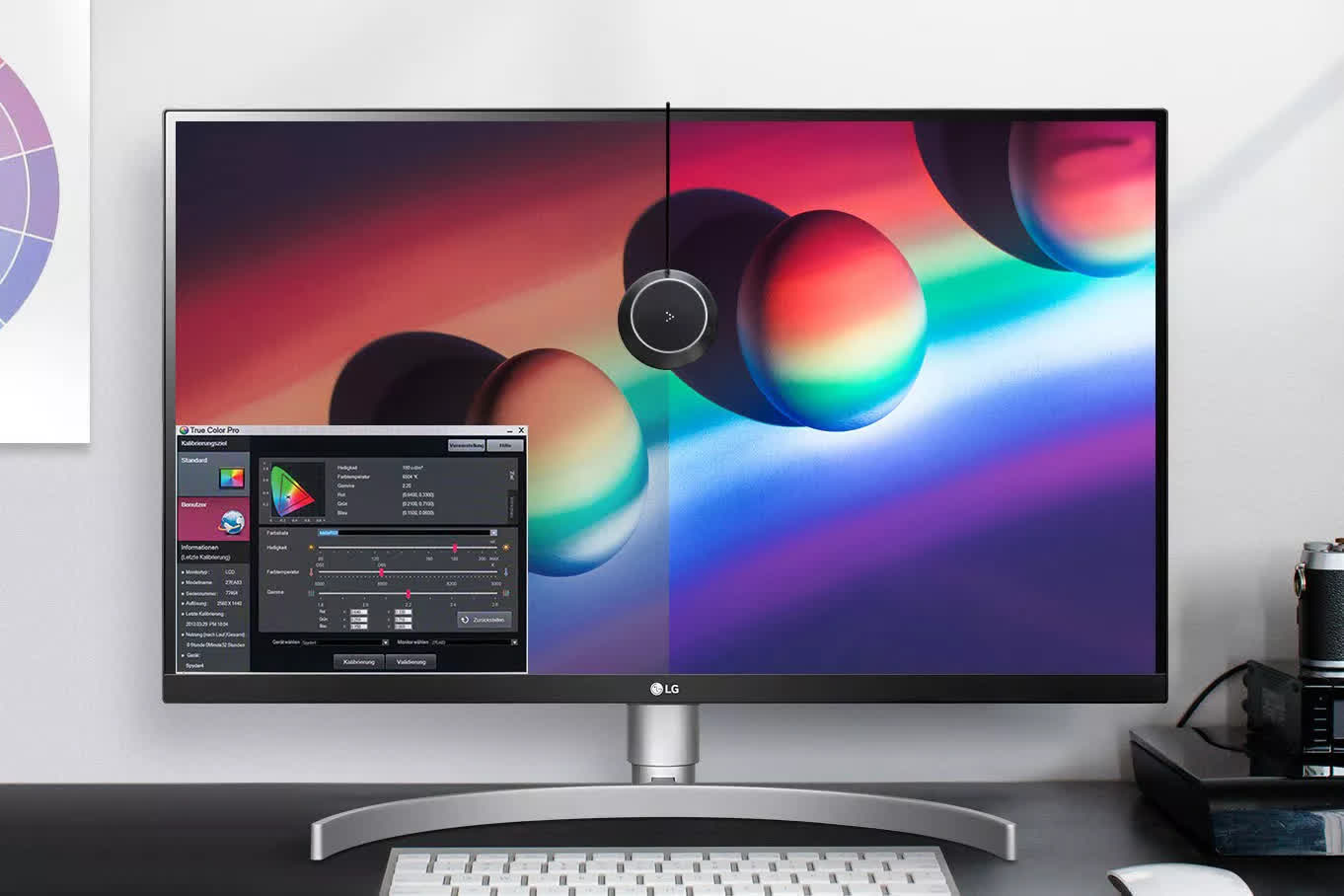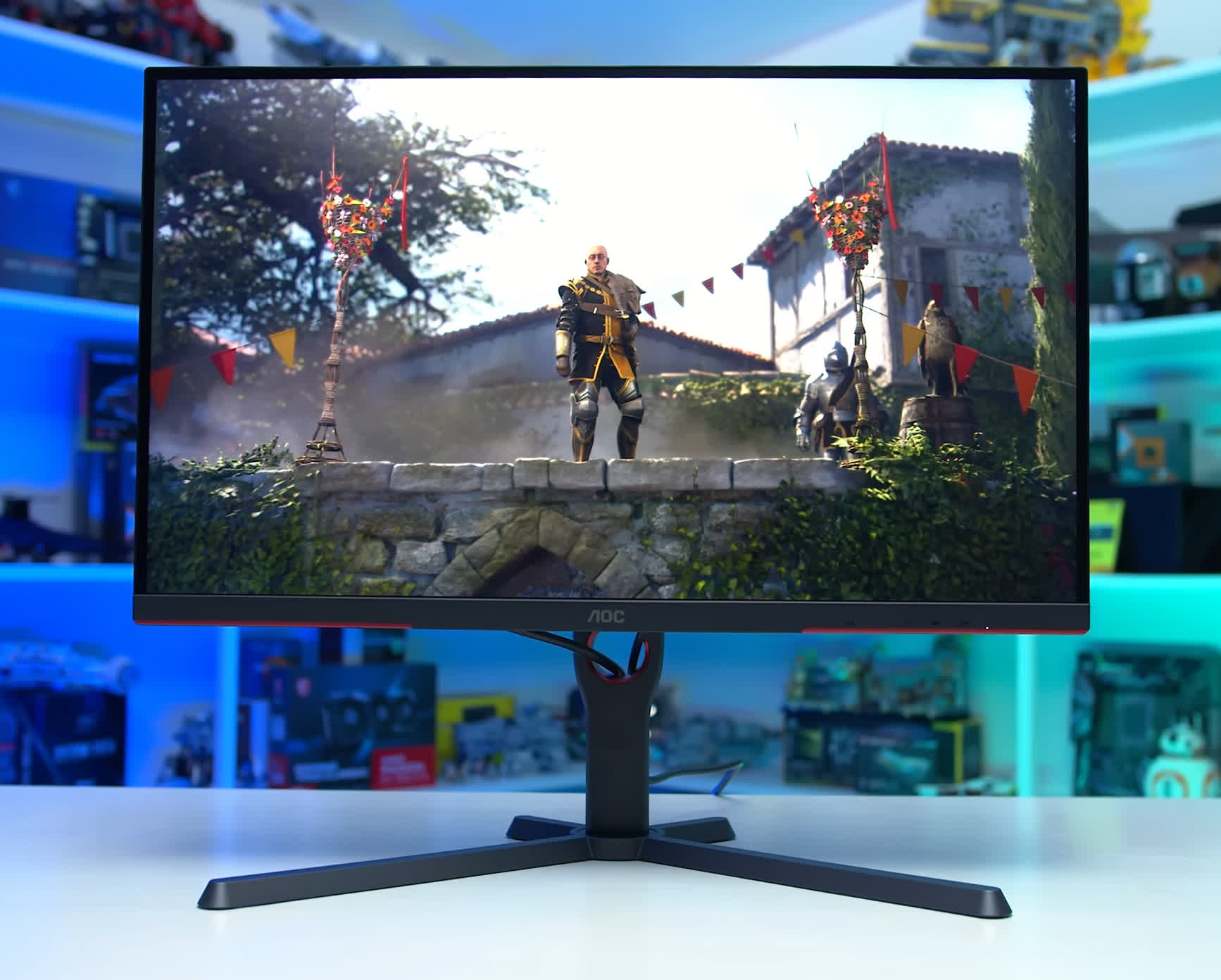The PC monitor market continues to receive a boost from the gaming sector. It's not just gamers but also enthusiasts and general consumers who are being attracted by high refresh rates becoming the standard, once-expensive 4K monitors getting ever cheaper, increasingly larger screens, and more OLED options that won't destroy your wallet.
To help you navigate the myriad of choices, we've collated all our monitor review knowledge and researched hundreds of models to create a concise list of recommendations. Whether you're after a high refresh rate display, a glorious big panel for content creation, or something that's budget-friendly yet packed with features, our best monitor guide will assist you in making the right choice.
- Best for Most
- Best for Content Creation
- Best for Enthusiasts
- Best for Gaming
- Best Portable Monitor
- Best Budget
More Buying Guides:
Best for Most (Top Value) Monitors
LG 32GR93U | Gigabyte M32U | Dell G3223Q

With such a variety of truly great monitors available, crowning a single one as the best of the bunch was an impossible task. However, we've narrowed it down to three of our favorites top-value choices overall – which one you prefer will likely depend on your use case.
The LG UltraGear 32GR93U offers a fantastic combination of a 4K resolution, 32-inch screen size, great responsiveness (1ms), and a 144Hz refresh rate on its IPS LCD panel, all for $529 (now discounted from the original $799). A 144Hz refresh rate is not the fastest out there, but it should be enough for most people who are not buying exclusively a gaming monitor --even more so when you consider your GPU will be pushing pixels around a 32-inch 4K screen. The LG is also engineered to minimize inverse ghosting artifacts, and provides a consistent overdrive mode experience.
The LG comes with impressive factory color tuning, an excellent sRGB mode, hardware calibration support, strong DCI-P3 color space coverage, and good brightness. It's also G-Sync and FreeSync Premium compatible and comes with HDMI 2.1 connectivity. For those who want a large monitor that is equally suited for work and play – including consoles – it's one of the best around.
The biggest complaints about the monitor are the HDR 400 certification and limited contrast, as well as the lack of USB-C. Nevertheless, the fact it ticks so many boxes at a comparatively low price makes this an excellent choice.
Gigabyte M32U
Fighting for the top spot is another 32-inch 4K monitor with a 144Hz refresh rate: the Gigabyte M32U. We've recommended this monitor many times before, and it's usually around the same price as the LG (currently at $570). Colors are well-balanced and vibrant, the screen has a fast response time, and there are plenty of features that help it stand out from the crowd.
The Gigabyte M32U has two HDMI 2.1 ports and one DisplayPort 1.4 input, both supporting the 144Hz refresh rate, with Display Stream Compression (DSC). The M32U also supports FreeSync Premium variable refresh rate, and although it's not officially certified by Nvidia, it works with their G-Sync Compatible mode.
A key feature included with the Gigabyte model is KVM functionality – this allows you to connect a keyboard and mouse (via USB 3.0 Type-A ports), and then connect the monitor to the primary device with HDMI/DP cables and a USB Type-B to A upstream cable (included in the box). A second device can then be attached with a separate USB Type-C cable and with a press of the KVM button on the back, the monitor will switch the display and controls between the devices.
As with the LG (or Dell below), the Gigabyte M32U is not a true HDR monitor. While rated to VESA HDR 400, it's just not bright enough to make the most of it. Gigabyte includes a local dimming feature to improve the IPS panel's rather low contrast ratio, which dims the backlights when displaying dark areas, but it just makes the dimming zones look far worse. Fortunately, the SDR quality more than makes up for this, and with a little bit of calibration, the panel's colors are extremely accurate.
Dell G3223Q
The Dell G3223Q is our third 4K/32-inch/144Hz monitor pick that's ideal for both gaming and productivity (not to be confused with the content-creation model Dell G3223QE). AMD FreeSync and Nvidia G-Sync compatibility are also part of the package, of course, and it has a 1ms GTG response time.
Dell's IPS panel provides vibrant colors and wide viewing angles, and it comes factory-calibrated for exceptional color accuracy, covering both DCI-P3 and sRGB color gamut effectively.
HDR performance is somewhat better than the other two, earning it DisplayHDR 600 certification, but still not true HDR as we get from OLED panels. The Dell delivers good brightness and color performance, although it falls short compared to high-end HDR implementations due to its edge-lit backlight, which limits contrast and color volume somewhat. The HDR modes are well-executed, particularly in gaming, where the edge zone dimming feature boosts contrast significantly.
The design is practical with a solid build quality. It offers height, tilt, and swivel adjustments, though it lacks portrait mode. The connectivity options are plentiful, featuring two HDMI 2.1 ports, a DisplayPort 1.4, and multiple USB ports, which are conveniently located for easy access. The Dell G3223Q is another excellent choice for gamers and professionals, especially at its competitive price point of $590.
Best Monitor for Content Creation
BenQ PhotoVue SW321C | Dell U3223QE | Asus ProArt PA32DC

The BenQ PhotoVue SW321C is our top monitor choice for content creators such as photographers, videographers, and designers seeking a high-quality display with excellent color accuracy. This 32-inch 4K IPS monitor stands out for its impressive color gamut coverage, boasting 99% Adobe RGB, 100% sRGB, and 95% DCI-P3, as well as a Delta-E of less than 2, ensuring vibrant and consistent colors across various professional uses. The PhotoVue also carries a pro-level price of $1,899.
A notable feature is the inclusion of hardware calibration, which allows for precise adjustments with a 16-bit look-up table, providing smoother gradations and more accurate color representations. The monitor is also pre-calibrated to ensure excellent color accuracy right out of the box, a significant advantage for professionals who rely on color fidelity.
In terms of aesthetics, the SW321C opts for a more functional than flashy design, with thick bezels and a robust stand that offers tilt, swivel, and height adjustments. However, the stand's lack of stability may be a drawback given the monitor's premium status and price.
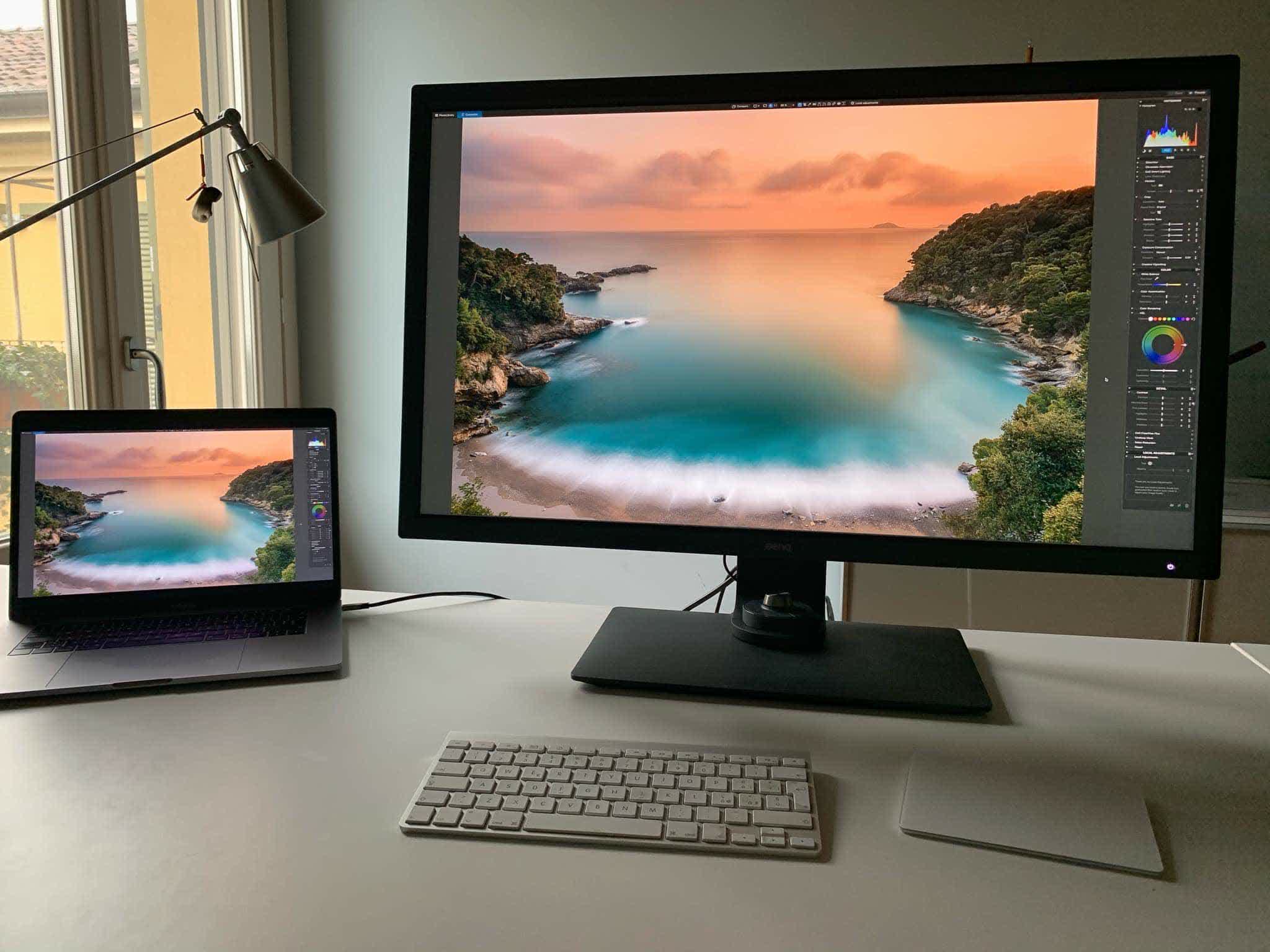
Connectivity is comprehensive, including multiple HDMI and USB ports, a USB-C port with 60W power delivery, and an SD card reader. The inclusion of a hotkey puck for easier navigation and settings adjustments is a nice touch, too.
There are areas where the SW321C could improve. The HDR performance is moderate, and the stand could be more stable.
Overall, the BenQ SW321C PhotoVue offers a solid package of features tailored for professional work, making it an attractive option for those who prioritize color accuracy and detailed visuals over sleek design and the very latest HDR capabilities.
Dell UltraSharp U3223QE
The Dell UltraSharp U3223QE is not as high-end, but still offers a great mix of pro features, color accuracy, and build quality, all for $677 which is less than half than the BenQ's price tag.
Dell's experience in producing high-end displays is made obvious with this display. The 3840 x 2160 IPS panel has been color-calibrated at the factory to produce 100% sRGB color accuracy out of the box, as well as 98% DCI-P3 and 89% Adobe RGB colors. The screen boasts 1.07 billion colors and a claimed 2000:1 contrast ratio, while the 400 nits of brightness help it to HDR 400 certification, which admittedly isn't great.
Ports consist of a single DisplayPort 1.4 and another DP output to allow for a second monitor to be daisy-chained. There are also four USB 3.0 slots, a single HDMI 2.0, a USB Type-C that offers Power Delivery (up to 90W of charging power), DisplayPort Alt Mode, and USB 2.0 data connectivity.
Other highlights include a built-in KVM that lets you switch between two PCs while using one keyboard and mouse. It also comes with tiny bezels (6mm), a low response time, and the minimalist chassis is solid.
The main downside to Dell's offering is the semi-gloss finish, as it doesn't handle reflections from bright sources very well. For some users, it may be tricky to find the right position without the screen glare being too distracting.
Asus ProArt PA32DC
The Asus ProArt PA32DC is a stunning 32-inch 4K monitor made for serious professionals, a fact reflected in its (reduced) price of $2,899. The ProArt uses an OLED panel, which means deep blacks, true 10-bit color depth, and a 1,000,000:1 contrast ratio. This is especially beneficial for video production and photo editing, where precise color representation is crucial.
The monitor supports multiple color standards, including DCI-P3 (99%), sRGB, Adobe RGB, and Rec.709, making it perfect for various pro applications. It comes pre-calibrated with a detailed report, too. Users can further calibrate it using the built-in colorimeter and Asus ProArt Calibration software or third-party solutions like Calman.
In terms of design, the PA32DC is functional with a solid metal stand that offers height, tilt, and swivel adjustments. The monitor also includes a hood to reduce glare, though its assembly can be somewhat fiddly. Connectivity options consist of multiple HDMI 2.0 ports, a DisplayPort 1.4, and USB-C, although it lacks HDMI 2.1, which may be an issue for some. There's also a 0.1ms response time, though it's obviously not designed with gamers in mind.
For SDR content, the PA32DC delivers excellent grayscale tracking and gamma accuracy, while its HDR performance is equally impressive, with support for multiple formats such as Dolby Vision, HDR10, and HLG. However, some users might find the out-of-the-box Standard mode less impressive, but switching to other presets or performing manual calibration can achieve near-perfect results.
Overall, the Asus ProArt PA32DC is a premium choice for professionals requiring top-notch color accuracy and contrast, offering features that justify its higher price point.
Best Monitor for Enthusiasts
Samsung Odyssey G7 | Alienware AW3423DWF

The Samsung Odyssey G7 32" curved monitor remains a top-tier display, even though it's a few years old, it blends a 1000R curvature with a 240Hz refresh rate and a 1ms response time for an immersive and responsive experience. The VA panel provides a high contrast ratio, delivering deep blacks and vibrant colors, and its 1440p resolution is a sweet spot between FHD and 4K. It supports both G-Sync and FreeSync Premium Pro, making for some silky-smooth gaming at the currently reduced price of $500.
The Odyssey G7 also includes features like customizable RGB lighting and a comprehensive OSD for easy settings adjustments. Its versatile connectivity options, including DisplayPort 1.4 and HDMI 2.1, cater to various setups, while the robust build quality ensures durability.
HDR600 certification enhances the visual experience by offering better dynamic range in both bright and dark scenes. The monitor's aggressive curve may not suit all users, and there can be minor issues like flickering when VRR is enabled. However, these are outweighed by its overall performance benefits.
The Samsung Odyssey G7 32" Curved Monitor stands out as a premier choice for serious gamers, offering exceptional performance, vibrant visuals, and a highly immersive experience. It's also a brilliant monitor when performing non-gaming tasks.
Alienware AW3423DWF
The Alienware AW3423DWF is somewhat similar to the Odyssey in that it's fast and curved but the Alienware is an OLED with all the pros and cons that come with that. It features a 34-inch 3440 x 1440 165Hz QD-OLED panel with a 21:9 aspect ratio and 1800R curve.
The AW3423DWF delivers all the excellent HDR and SDR performance we know and love from a QD-OLED panel, with excellent brightness, great speed, low input latency, (now) decent HDR accuracy, a great sRGB mode, nice port selection, a quiet fan, upgradeable firmware, a three-year burn-in warranty… the list goes on.
This panel can hit up to 1,000 nits of brightness for small elements and excels at displaying HDR content, making it highly suited to single-player gaming, especially with the immersive ultrawide format. It's not the fastest OLED available now (there are 360Hz and even 480Hz options), but the speed of OLED allows it to punch above its weight relative to an LCD operating at the same refresh rate.
The AW3423DWF is well-calibrated, has decent SDR brightness, and Dell helps mitigate anxiety over burn-in with a three-year warranty. The subpixel layout of this QD-OLED panel isn't ideal for text quality, and like all OLEDs, there is a risk of permanent burn-in. The glossy screen coating is divisive, offering benefits in low ambient light environments but struggling in brighter conditions.
Best for Gaming
4K QD-OLEDs: Asus | Dell | Gigabyte | MSI

The ultimate 4K gaming monitor right now is one of the many 4K QD-OLEDs that hit the market in the first half of 2024. OLED brings lightning-fast response times and individual pixel control, resulting in an excellent HDR gaming experience for gamers. When you step up to 4K, you get a higher resolution, better text clarity, and a larger panel size, making these displays some of the best on the market overall.
While there are two 4K OLED variants available, QD-OLED is the better choice for most people. The 32-inch 4K 240Hz QD-OLED panels we've tested produce higher real-world HDR brightness, better color volume, slightly better text quality, and lower prices. The glossy screen coating can have issues in brighter environments, but the clarity it provides is highly sought after, especially if you're not a fan of matte screens and their coating grain. Our recent 4K WOLED vs 4K QD-OLED feature goes into more detail on this.
We've tested four of the available 4K QD-OLED offerings – from Asus, Dell, Gigabyte and MSI – and overall performance is very similar between them, though each offers unique selling points. Generally speaking, if you're after fast response times, great motion and text clarity, a high refresh rate at 4K, excellent HDR, deep blacks, etc., you get that with all the models, so it's hard to go wrong. They all share the same QD-OLED panel which explains why the performance characteristics are so similar.
To help you decide on a specific model, here's what we recommend:
- The Asus ROG Swift PG32UCDM has the best feature set with an unlocked sRGB mode, ELMB black frame insertion, and promised Dolby Vision support, but is typically the most expensive.
- The Gigabyte Aorus FO32U2P is the only one with DisplayPort 2.1 UHBR20 connectivity, providing a way to access 4K 240Hz without DSC.
- The Dell Alienware AW3225QF is the cheapest variant in most regions, sometimes by a significant margin, which makes it a great choice if you don't mind the curved panel. It also supports Dolby Vision out of the box.
- The MSI MPG 321URX is the most affordable in the US and has the best set of user customizable OLED care features.
There are also several models we haven't tested that could offer better value. The Gigabyte FO32U2 is the same as the U2P model but without DisplayPort 2.1, and it's typically cheaper. There's also the MSI MAG 321UPX, similar to the 321URX but without USB ports. Originally, this model didn't support firmware updates, but now MSI tells us it does, though we haven't tested how it works yet.
While we think the 4K 240Hz QD-OLED offerings are generally the way to go for most buyers, especially those focused on single-player HDR gaming, 4K WOLED is still worth considering in some situations.
If you're a gamer who loves fast-paced competitive multiplayer titles, a 4K WOLED like the LG 32GS95UE might be the better choice. These 32-inch WOLED panels offer a unique "Dual Mode" feature that allows switching between 4K 240Hz and 1080p 480Hz modes at the press of a button.
The 1080p 480Hz mode has noticeably better motion clarity and lower input lag than 4K 240Hz modes, making it better for playing titles like Counter-Strike, Call of Duty, or Apex Legends – if you don't mind the drop in resolution.
Given that it also supports 4K 240Hz, you can switch back to a higher resolution experience for single-player or less motion-sensitive titles, giving you the best of both worlds – an awesome feature for those who enjoy a wide variety of games. However, the LG is more expensive than a typical QD-OLED, is less well-calibrated, doesn't get as bright in real-world scenes, and lacks other features.
Best Portable Monitor
NexiGo NG17FGQ | Lenovo ThinkVision M14

Not all monitors have to be hefty, weighty beasts. For those looking for something light that can be hooked up to your laptop or tablet on the go, check out the Nexigo NG17FGQ.
This 17.3-inch portable monitor is designed for gamers seeking high performance on the go, featuring a Full HD IPS panel and delivering crisp visuals with excellent color accuracy. The standout feature is the incredible 300Hz refresh rate, ensuring smooth gameplay, combined with a fast 3ms response time. Its brightness peaks at 300 cd/m², which is decent but might not suffice for outdoor use. The monitor also covers over 100% of the sRGB color gamut and around 77% of the DCI-P3 spectrum.
A key advantage of the NG17FGQ is its versatile connectivity options, including two USB-C ports and one HDMI port. The HDMI port supports up to 240Hz, while the full 300Hz refresh rate can be achieved through a USB-C connection. It also includes a USB-A port for charging other devices.
The design is sleek and portable, featuring a brushed aluminum frame and a rigid folding cover that doubles as a stand. The monitor also includes small built-in speakers and a 3.5mm headphone jack for better audio options.
While the NexiGo is priced at a premium ($449), it offers good value with its high refresh rate and gaming capabilities. Some minor drawbacks include the lack of built-in overdrive settings and the reliance on a handheld remote for navigating the OSD, which can be cumbersome. Additionally, it doesn't officially support G-Sync, though it still performs well without screen tearing.
Lenovo ThinkVision M14e
The Lenovo ThinkVision M14 was last year's winner of this category, and it remains a good alternative for those looking for a portable and affordable display ($243), especially if you don't need a blistering refresh rate. Packing a 14" 1080p 60Hz screen, the M14 is bright, with reasonable viewing angles and crisp text display.
It uses an IPS panel, so it doesn't have a high contrast ratio and it's not ideal for darkened rooms. With a screen brightness of 250 nits, it handles reflections and glare well, though it's not suitable for outdoor use.
In terms of connectivity, there are just two USB Type-C ports. Unless you have a laptop or tablet that features DisplayPort Alt Mode, then you'll need to use one of them to power up the M14. However, it does offer charging pass-through, so it's possible to charge the device that the monitor is displaying. With calibration, the M14's color accuracy is good for a monitor of this type, but even the default settings are perfectly acceptable.
Best Budget Monitor
LG 27UK650-W 27" | AOC Q27G3XMN

You can find 4K monitors at remarkably low prices these days, which is awesome, so consumers are spoilt for choice when it comes to choosing feature-packed UHD screens priced under $400. The LG 27UK650-W is a ridiculously affordable option at just $249.
This monitor is an excellent all-rounder for those wanting a budget 4K monitor for a variety of use cases: content consumption, creation, etc. The 27-inch IPS panel boasts 99 percent coverage of the sRGB color spectrum along with HDR 10 support, though a peak brightness of 450 nits (350 nits typical) means its not a true HDR display by any means.
While not advertised as an out-and-out gaming monitor, the monitor does come with FreeSync, supports Nvidia's G-Sync, and has a 5ms GtG time. You also get additional features such as a black stabilizer, an upscaling function, Dynamic Action Sync for reducing input lag further, and presets for gaming genres such as FPS and RTS titles. That 60Hz refresh rate is going to put plenty of people off, though.
AOC Q27G3XMN
For something more gaming-focused, there's the AOC Q27G3XMN. It's only slightly more expensive at $279 and is 1440p rather than 4K, but this 27-inch monitor has a 180Hz refresh rate and 336 zone full array local dimming backlight, providing entry-level HDR hardware capabilities.
There are huge benefits to this hardware configuration for HDR gaming. This AOC monitor can deliver much tighter dimming relative to most other LCDs at this price, a better contrast ratio in real-world content, richer blacks and shadows, and a high peak brightness that exceeds 1,000 nits.
The panel is another example of how HDR doesn't need a 4K resolution to be good. Of course, we're not seeing a flagship high-end experience from 336 zones; there can be issues with blooming and so on, but it absolutely outperforms the LCD competition at a similar price.
Motion performance is pretty acceptable from a VA LCD, delivering the best tuning we've seen from a non-Samsung implementation. Dark level smearing isn't fully eliminated but not too problematic, and response time speed ends up similar to some other budget IPS LCDs.
